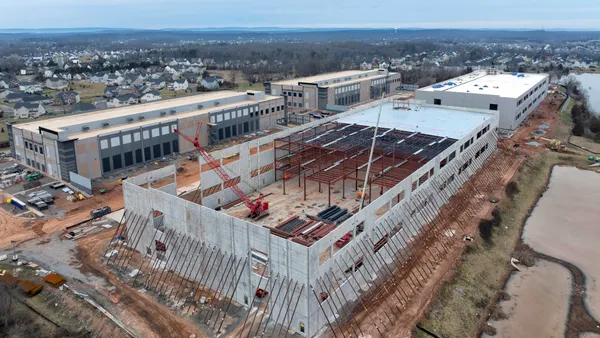Dive Brief:
- The developers of Hudson Yards, a mixed-use development in New York City, have finalized a $5 billion financing package — including $2.19 billion in debt, and a balance in equity financing. The package marks one of the largest capital raises for a real estate project in the U.S. since the 2008 downturn, according to The Wall Street Journal.
- Lenders include Bank of America, Wells Fargo, Bank of China, Deutsche Bank, Canadian Imperial Bank of Commerce, Credit Agricola and industrial and Commercial Bank of China. The developers are putting equity into the deal, along with Related Companies, Oxford Properties Group, tenants buying office condominiums and overseas EB-5 program investors. The EB-5 program encourages foreigners to invest in the U.S. and create jobs in exchange for a green card.
- This round of financing will be used to build two connected buildings that will include a 90-story office building, a 1-million-square-foot mall and an observation deck. When complete, the project is expected to cost $20 billion, with more than 17 million square feet of office, retail and residential space, The Journal reported. According to developers, construction could take 10 years or more.
Dive Insight:
Hampered by a location outside the traditional boundaries of Midtown Manhattan, the project has plagued developers for almost 25 years. However, spurred along by a new subway station nearby and a strengthening real estate market, the popularity of the area is on the upswing.
"Four billion dollars of infrastructure has gone on in and around Hudson Yards in advance of us opening," said Jeff Blau, Related’s chief executive. "People have taken notice."
Construction is currently underway on the two connected building plus several others. Developers also recently announced they would sell office condominiums in the tower to Time Warner, Inc., and KKR & Co. Wells Fargo will also also take over 500,000 square feet. Neiman Marcus will also lease retail space.
Blau said credit is still tight, and other buildings in Hudson Yards have also used non-traditional financing. For example, London-based charity Children’s Investment Fund Foundation provided $850 million in financing for a 960,000-square-foot residential tower on the site.
Nevertheless, if the National Association of Realtors is correct in its 2016 predictions, next year will see an easing of credit restrictions as job growth continues and office vacancies decline.
This is good news for the New York City commercial real estate market, as office construction reached a 25-year high in August, and construction spending citywide is expected to reach $40 billion next year.










